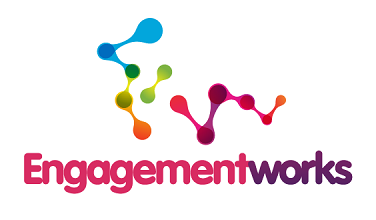Some people think that community engagement is an inconvenience that adds time and cost to what should otherwise be routine decision-making processes. A riposte to that belief takes three words: Christchurch, School, Closures.
What the current saga in Christchurch reveals is that bad or inadequate processes add time and cost to potentially contentious decision-making processes. In the case of the proposed Christchurch school closures, the Supreme Court’s recent decision means that the Ministry of Education will probably have to go back to the beginning of a process to decide which schools in that area should be closed or merged with their neighbours. This is not a clean slate, thanks to the damage to the Ministry’s reputation and erosion of social capital wrought by the first foray.
To make progress through the mire, the Ministry of Education needs to authentically engage with affected communities in Christchurch. Rather than heading straight for the solutions box, as it did last time. It should spend time defining the problem to which school closures may be an answer.
Legislative requirements for engagement should always be viewed as an absolute minimum investment. Published public notices, public meetings and written submissions are not particularly effective ways of understanding what communities think.
Once consensus is reached about a problem, then the Ministry should ask affected communities for their ideas about what solutions may look like. Those solutions can then be analysed for their affordability and practicality, with recommendations from that exercise being submitted firstly to the affected communities and then to the Minister of Education. A Minister who really trusted affected communities may even choose to delegate the decision-making to them.
That may sound time-consuming, risky and expensive. But it pales in comparison with the economic and social costs of the Christchurch schools closures saga to date.
A well-run and robust community engagement process could depoliticise a contentious issue by providing opportunities for factions within the Christchurch area to engage with each other, rather than believing that their only recourse is to lobby the Minister of Education, take shots at each other through the media or take legal action.
Legal action is a last resort for any planning process. Even the most well planned and delivered community engagement cannot guarantee that some appellant won’t seek a court decision, but it can significantly reduce that risk. It can also be used as strong evidence to put before a judge to show what opportunities were provided for communities to engage.
Community engagement shouldn’t be seen as a “nice to have”. Rather it should be seen as a “must have”. Organisations that make decisions that impact on communities should be prepared to invest time in developing a community engagement strategy and training key role-holders, as well as governance groups, like senior managers, directors or elected councillors. While this will require some investment in dollars and time at the start, it is an investment that should have a strong payback in terms of that organisation’s reputation and trust.
What the current saga in Christchurch reveals is that bad or inadequate processes add time and cost to potentially contentious decision-making processes. In the case of the proposed Christchurch school closures, the Supreme Court’s recent decision means that the Ministry of Education will probably have to go back to the beginning of a process to decide which schools in that area should be closed or merged with their neighbours. This is not a clean slate, thanks to the damage to the Ministry’s reputation and erosion of social capital wrought by the first foray.
To make progress through the mire, the Ministry of Education needs to authentically engage with affected communities in Christchurch. Rather than heading straight for the solutions box, as it did last time. It should spend time defining the problem to which school closures may be an answer.
Legislative requirements for engagement should always be viewed as an absolute minimum investment. Published public notices, public meetings and written submissions are not particularly effective ways of understanding what communities think.
Once consensus is reached about a problem, then the Ministry should ask affected communities for their ideas about what solutions may look like. Those solutions can then be analysed for their affordability and practicality, with recommendations from that exercise being submitted firstly to the affected communities and then to the Minister of Education. A Minister who really trusted affected communities may even choose to delegate the decision-making to them.
That may sound time-consuming, risky and expensive. But it pales in comparison with the economic and social costs of the Christchurch schools closures saga to date.
A well-run and robust community engagement process could depoliticise a contentious issue by providing opportunities for factions within the Christchurch area to engage with each other, rather than believing that their only recourse is to lobby the Minister of Education, take shots at each other through the media or take legal action.
Legal action is a last resort for any planning process. Even the most well planned and delivered community engagement cannot guarantee that some appellant won’t seek a court decision, but it can significantly reduce that risk. It can also be used as strong evidence to put before a judge to show what opportunities were provided for communities to engage.
Community engagement shouldn’t be seen as a “nice to have”. Rather it should be seen as a “must have”. Organisations that make decisions that impact on communities should be prepared to invest time in developing a community engagement strategy and training key role-holders, as well as governance groups, like senior managers, directors or elected councillors. While this will require some investment in dollars and time at the start, it is an investment that should have a strong payback in terms of that organisation’s reputation and trust.


 RSS Feed
RSS Feed
